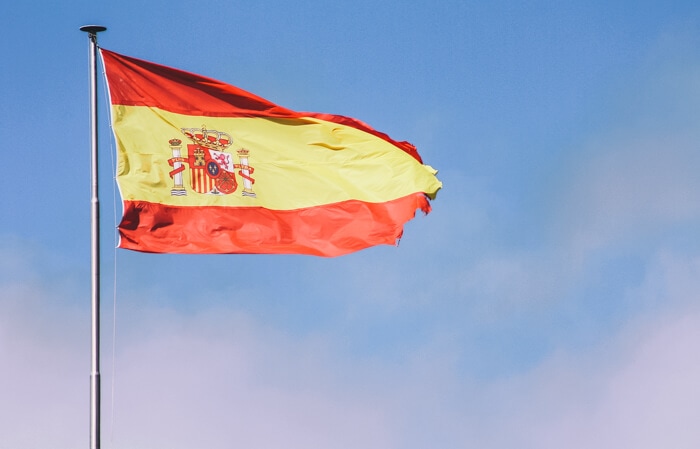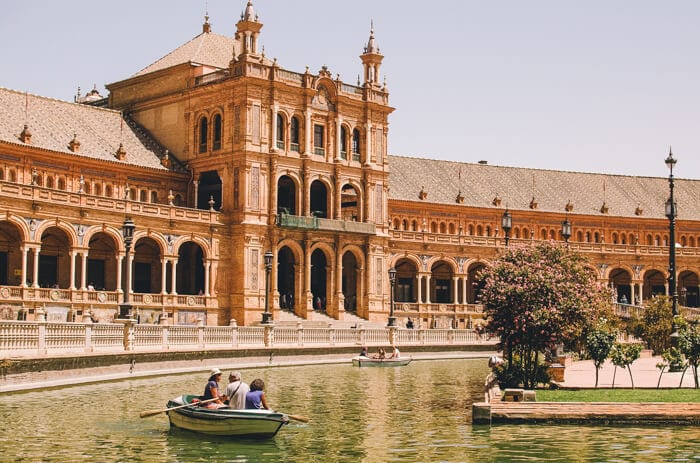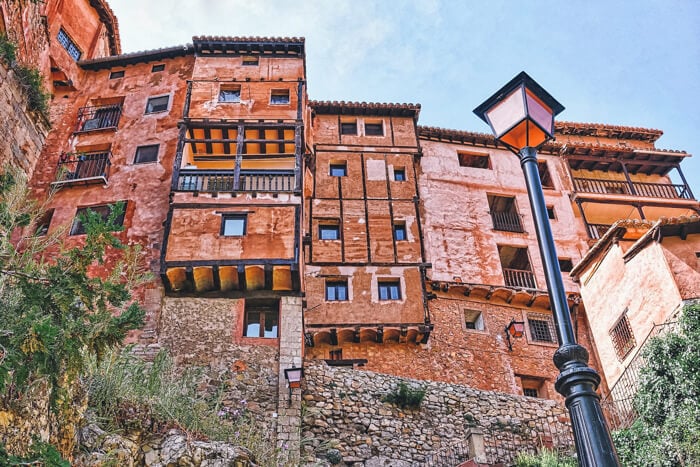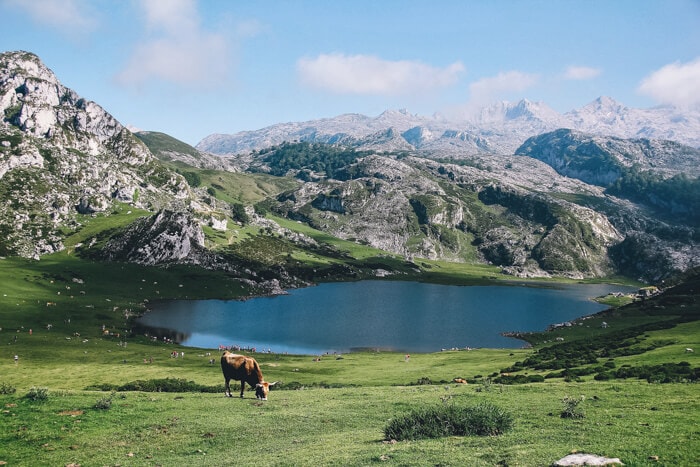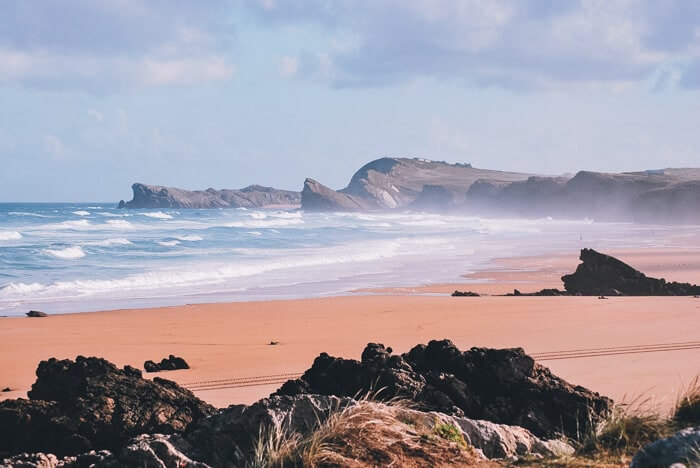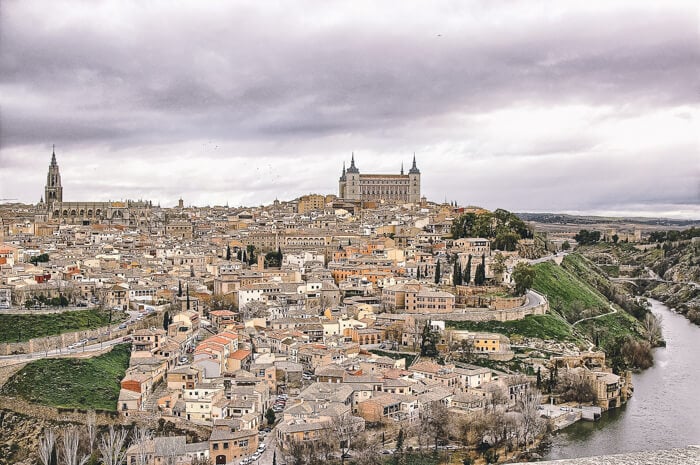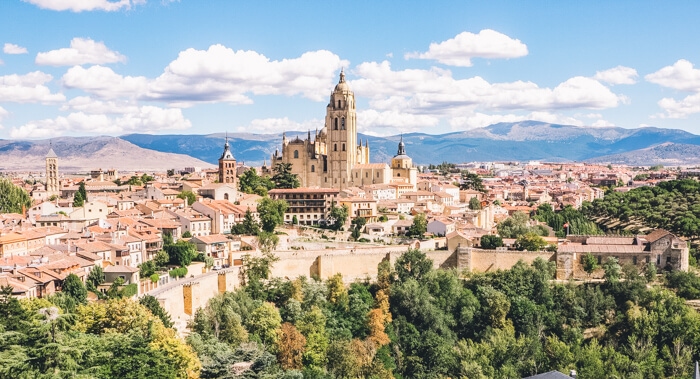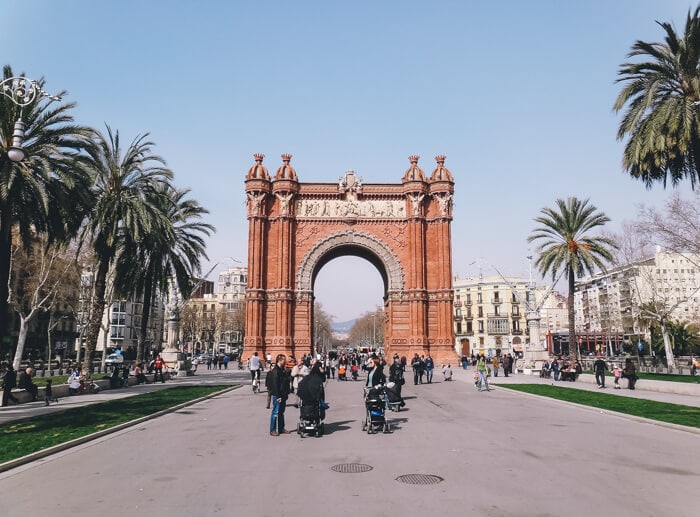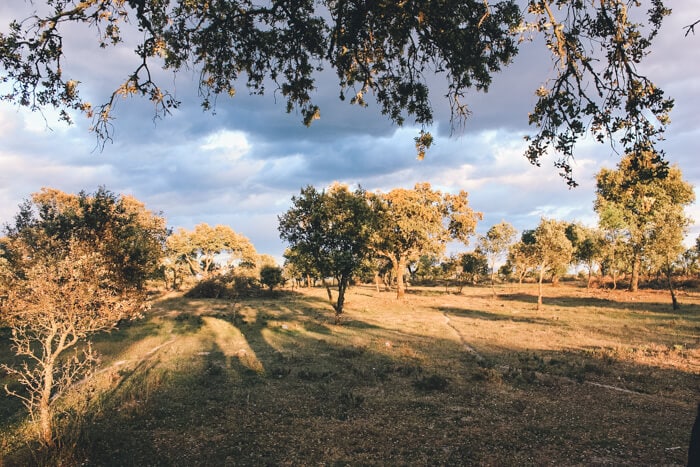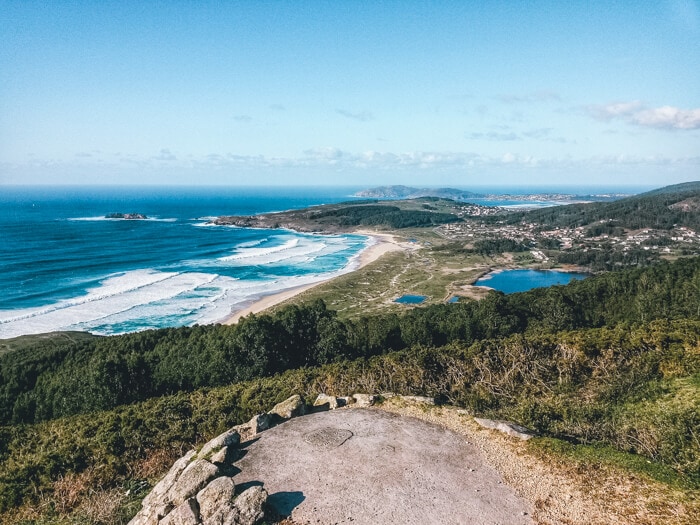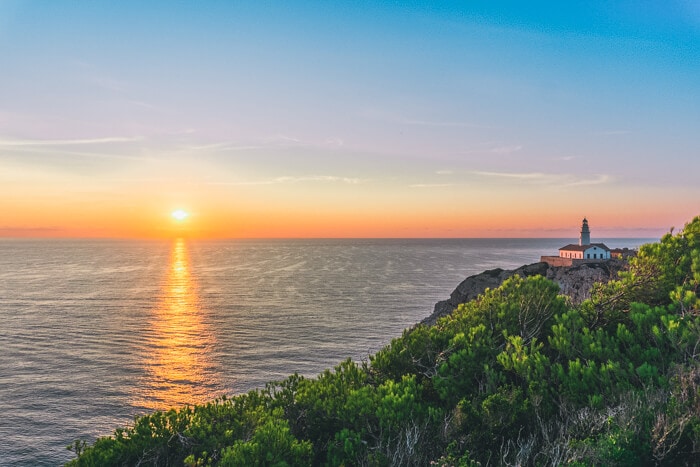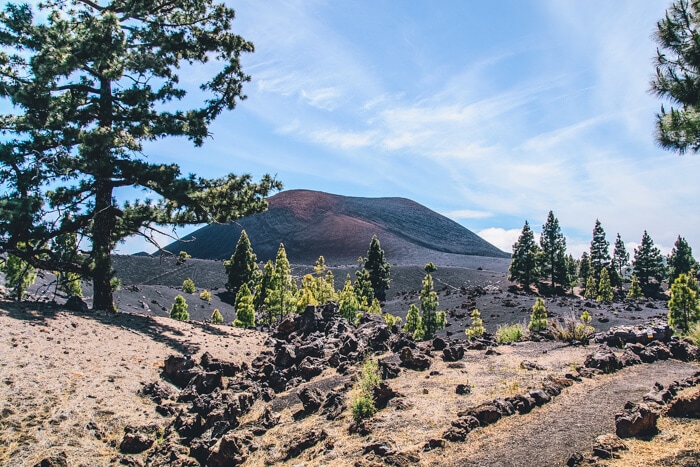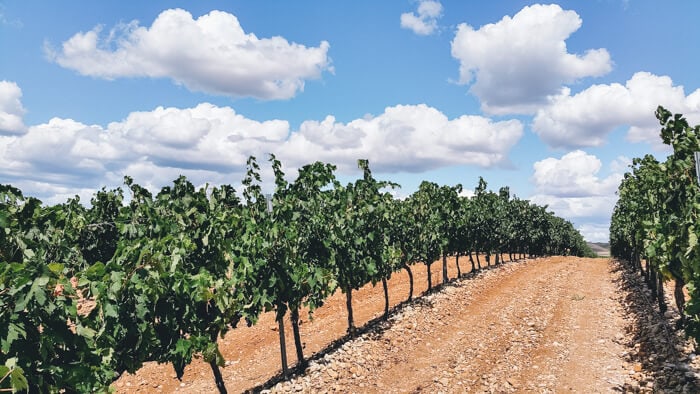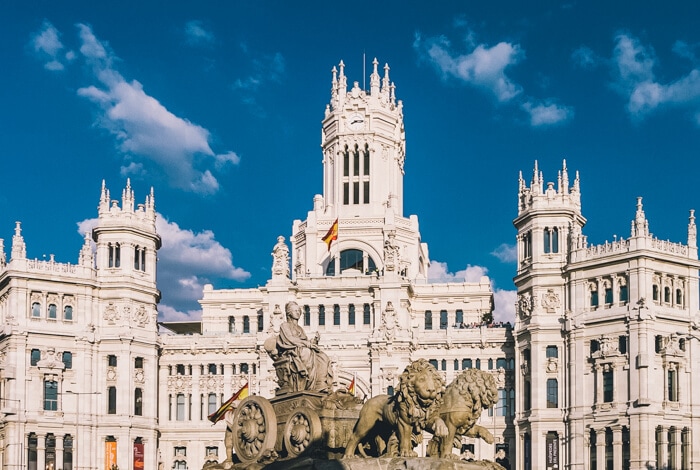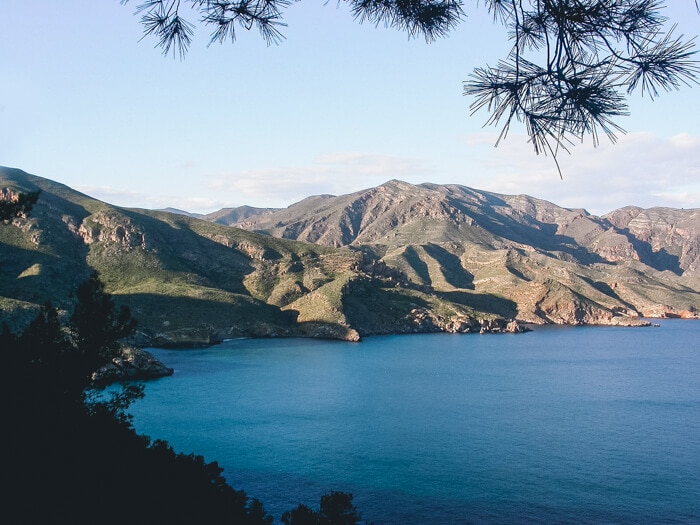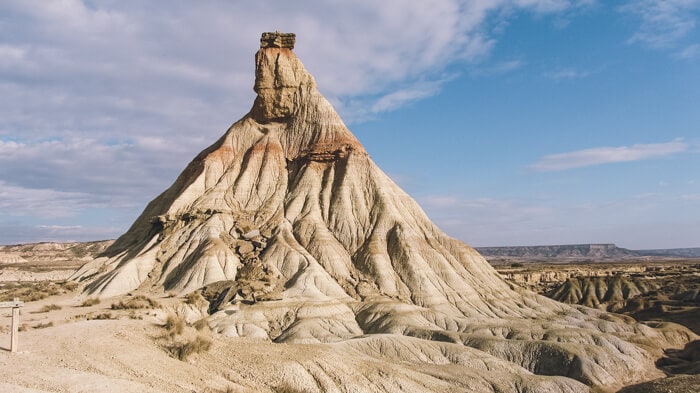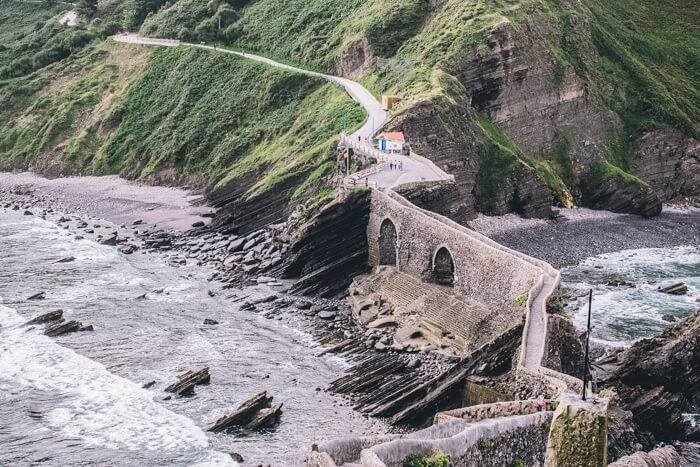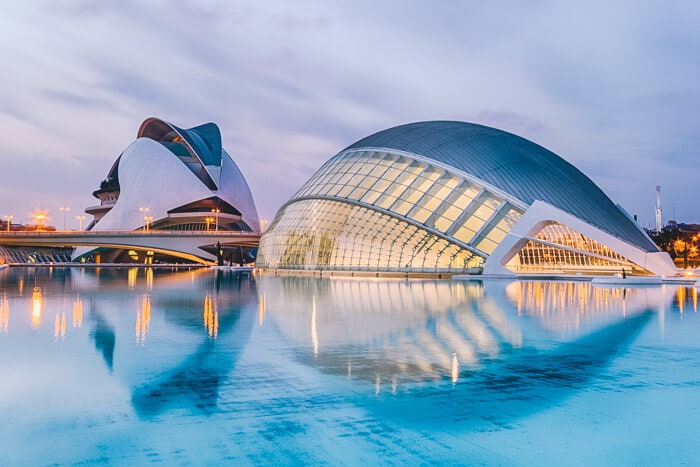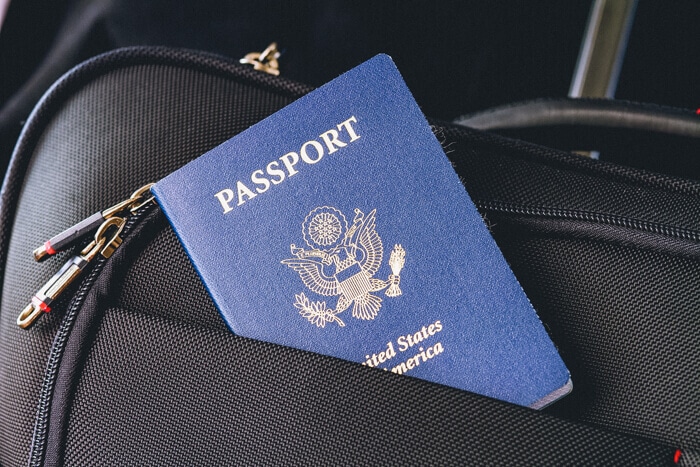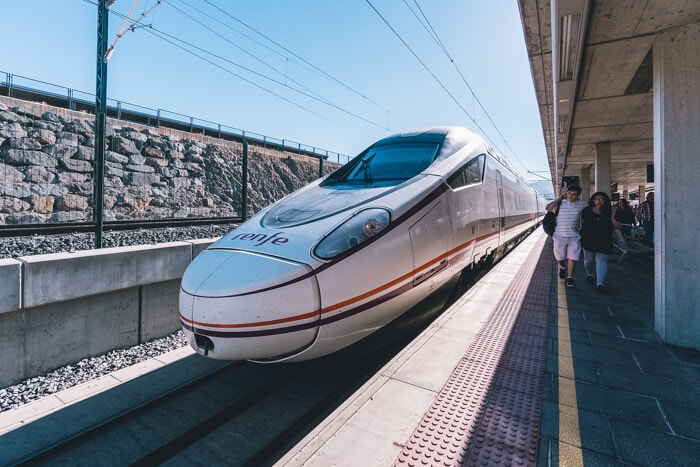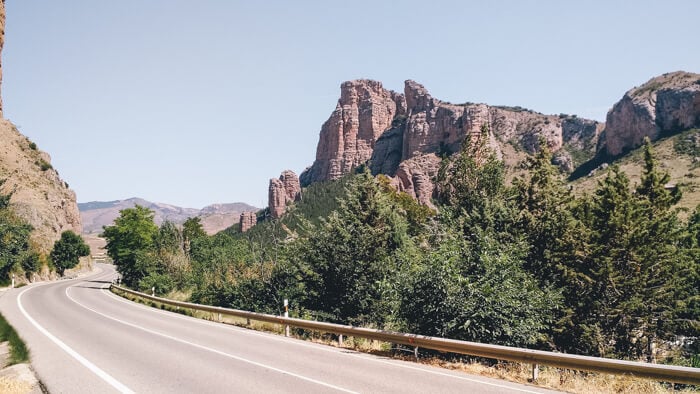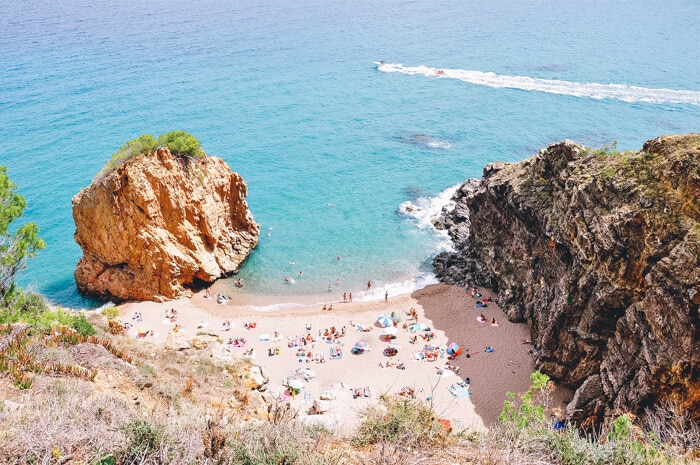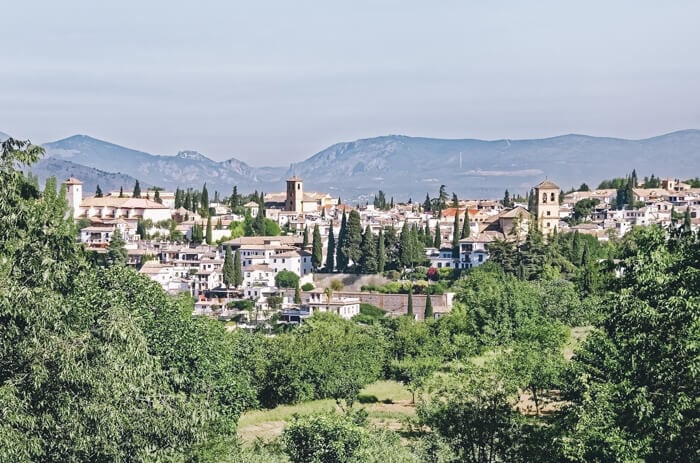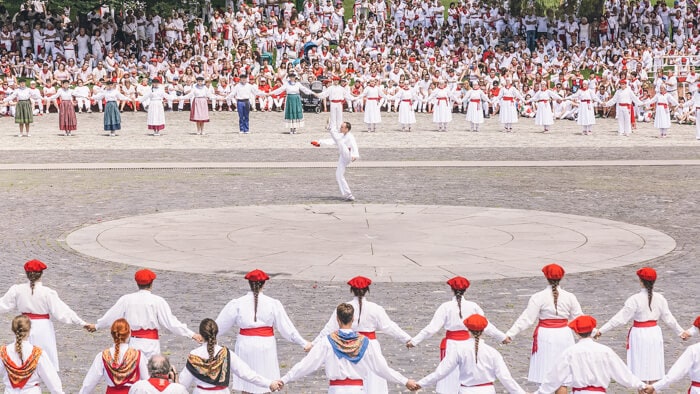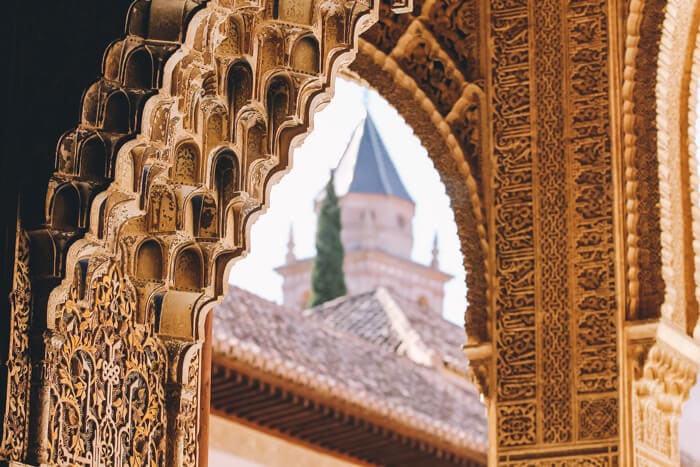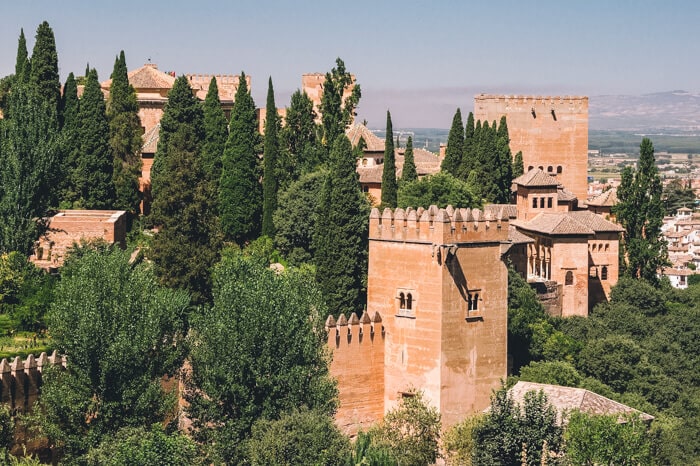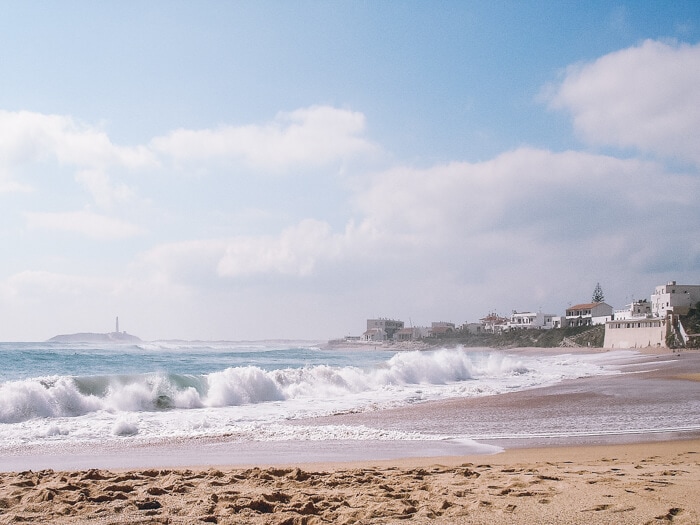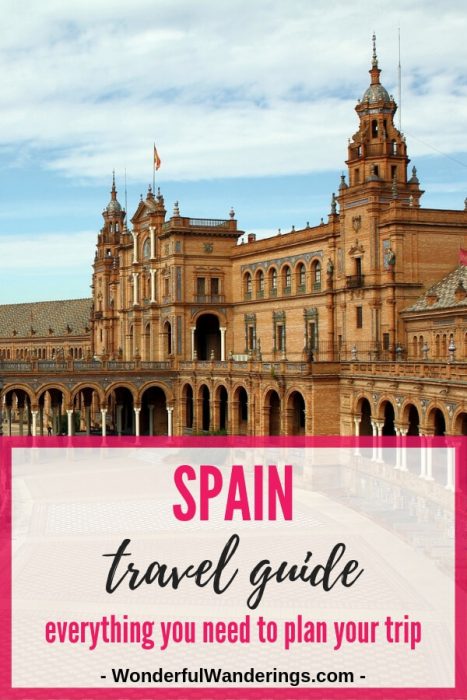Planning a trip to Spain? Awesome! This Spain Vacation guide shows you where to go, how to get there, what to eat there and much much more. Check it out.
Spain country is divided up into 16 autonomous regions, each with their own character and identity. The country is best known for its delicious food (think tapas and paella), traditional dancing and music such as flamenco, and hundreds of years of art and culture. It’s hardly surprising that so many tourists visit! The Spain Vacation Guide holds all the information you need to plan your own trip to Spain.
Spain is located on the Iberian Peninsula, which it shares with Portugal and Andorra, in southwestern Europe. In 2018, it became the world’s 2nd most visited country by tourists, moving ahead of the USA. Only France receives more visitors annually.
Spain is Europe’s 4th biggest country. It has been a member state of the EU since 1986, and of NATO since 1992.
Contents
- Spain Vacation Guide: quick facts
- Provinces of Spain
- 1. Andalusia
- 2. Aragon
- 3. Asturias
- 4. Cantabria
- 5. Castilla – La Mancha
- 6. Castilla y León
- 7. Catalonia
- 8. Extremadura
- 9. Galicia
- 10. Islas Baleares (Balearic Islands)
- 11. Islas Canarias (Canary Islands)
- 12. La Rioja
- 13. Madrid
- 14. Murcia
- 15. Navarra
- 16. Pais Vasco (Basque Country)
- 17. Valencia
- 18. Ceuta and Melilla
- How to travel to Spain
- Traveling through Spain
- What to pack for Spain
- The best time to visit Spain weather wise
- What to eat in Spain
- Famous events in Spain
- Public holidays in Spain
- Cultural customs to be aware of in Spain
- Books about Spain
- Where to stay in Spain
- Don’t forget travel insurance
- Basic phrases and their pronunciation
- Safety in Spain
- The use of cash and cards in Spain
- Calling abroad, WiFi and data use in Spain
- Tipping in Spain
- A brief history of Spain
- Posts about Spain
Spain Vacation Guide: quick facts
Size: 504,645 km² or 195,364 sq mi
People living there: more than 46,700,000
Capital: Madrid
Governmental structure: Constitutional Monarchy
National day: October 12
Time zone: Central European Time / UTC+1 / GMT+1 for mainland Spain, Western European Tome / UTC / GMT for the Canary Islands
Currency: euro (EUR)
Power voltage and socket type(s): 230V, plug types F and C. If these plug types don’t match your devices, make sure to bring a universal adapter
Official religion(s)/Freedom of religion: Freedom of religion. 2/3 of the population is Roman Catholic, followed by atheist and agnostic citizens, and mostly other Christians.
Official language(s) and general knowledge of English: Spanish is the official language, followed by regional languages like Catalan, and Basque. English is semi-widely spoken.
Drives on this side: right
International driver’s licence accepted? yes
Phone code: +34
Vaccinations needed? None
Can you drink the tap water? yes, so make sure to bring a reusable water bottle
Provinces of Spain
1. Andalusia
Andalusia is the second largest province in Spain and is one of the most popular tourist destinations in the country. Its rich culture has had many different influences over the years, from Jewish to Arabic. One of the best examples of Moorish architecture can be found near Granada – the Alhambra Palace. As well as vibrant, exciting, and historical cities like Malaga, Córdoba, and the capital Seville, Andalusia has a lot to offer in terms of nature.
There’s the volcanic Tabernas Desert, great beaches on the coast for sunbathing and swimming, and excellent hiking in the region’s hills and mountains. Although it almost touches Africa, you can ski in the Sierra Nevada mountain range too.
Day trips from Rota
2. Aragon
A large landlocked state in the northeast of Spain, Aragon consists of the provinces of Zaragoza, Huesca, and Teruel. Although not as renowned as in Andalusia, there are excellent examples of Múdejar (Moorish) architecture, as well as a number of monasteries and castles. For art lovers, this region was the birthplace of one of the great Spanish artists, Francisco de Goya.
Away from art and culture, Aragon is an excellent spot for natural attractions. In the north, you’ll find the Pyrenees where you can ski in winter and try a whole host of other activities during the summer. There’s also the Ordesa y Monte Perdido national park, a spectacular spot for adventure sports and relaxing alike. The region is also famed for its excellent gastronomy and wine.
3. Asturias
The principality of Asturias is on the north coast of Spain and is famed for its natural beauty. Home to protected landscapes, national parks, and the best-conserved coastline in Spain, it’s a paradise for those who want to get closer to nature. Along the coast, there are 18 picturesque fishing villages where you can immerse yourself in the traditions of Asturian culture, as well as the huge port city of Gijón.
Step back in time and discover the cave paintings in Cangas de Onis, otherwise known as the cradle of Spain, or perhaps even further at the Jurassic museum near Llastres. The food and drink traditions of Asturias are also worth exploring – try traditional flat cider poured expertly poured from above at an odd angle, the warming winter stew of fabada, or share an enormous cachopo with about 4 friends.
4. Cantabria
Cantabria is on the north coast of Spain and sits on the Bay of Biscay. The regional capital, Santander, is a large port known for El Sardinero beach and the Cabo Mayor lighthouse. The region is largely undeveloped by Spanish standards, meaning that outside of Santander you can get a true essence of traditional Spain.
Outdoor lovers will be happy in Cantabria, as it’s the location of some of Spain’s highest mountains on the mainland – the Picos de Europa, excellent for climbing, hiking, and mountain biking. There are over 60 caves with ancient paintings, and the most famous, Altamira, is one of nine UNESCO World Heritage sites.
5. Castilla – La Mancha
Castilla – La Mancha is the region to the south and east of Madrid and the 3rd biggest in Spain. It has been immortalized in arguably the most influential work of Spanish literature, Miguel de Cervantes’ great work of the 17th century, Don Quijote de La Mancha. You can visit the house where the author lived in the historic town of Alcalá de Henares.
The region is symbolized by wide open plains, vineyards, windmills, and castles. On the plains, you’ll find the ancient city of Toledo, a beautifully preserved walled city filled with medieval, Arabic, and Jewish architecture. You can see some of El Greco’s works in the cathedral there. Another city worth a visit is Cuenca, where the hanging houses look down into the ravine of the river Huécar.
6. Castilla y León
Castilla y León is Spain’s biggest province, set north of Madrid and bordering Portugal to the west. It is mostly a large plateau surrounded by mountains. The best-known cities in the region are Segovia, where you can visit the historical Roman aqueduct, Salamanca, one of the world’s oldest university cities, and Burgos, the regional capital.
Castilla y Leon is the birthplace of Spanish (hence the name Castillian) and is a great place to spend a few weeks if you want to do a Spanish course, or simply just get to grips with the language from speaking to locals over some tapas and a beer.
7. Catalonia
Catalonia, which is situated in northeast Spain and borders France and Andorra has rich culture and heritage, in addition to its own language, Catalan. It’s also where Spain’s second city is located – Barcelona.
The city is famous for Gaudi’s exquisite and unusual architecture, which can be seen in Park Güell, Casa Batllo, and the Sagrada Familia cathedral. Barcelona is one of the most popular tourist destinations in Europe. You can find my Barcelona itineraries here.
Outside of Barcelona, Girona is famed for its medieval architecture, whereas Tarragona boasts a Roman amphitheater. The Costa Brava is also found in Catalonia and is a popular destination with European tourists due to cheap flights, lots of family-friendly activities, and excellent beaches.
8. Extremadura
Extremadura is one of the lesser visited regions among tourists. The heart of old Spain is in the west, on the border with Portugal. The cities of Mérida, Trujillo, and Cáceres are considered some of the best-preserved historical cities in the country. The region is also home to some of Spain’s finest inland cuisine, with delicious stews, roasted meats, and strong and creamy cheese.
Settlements in Extremadura are few and far between, with the land dotted with hilltop castles and old, crumbling farmhouses. Nature lovers should head to Monfragüe National Park, which is one of the best places to visit in the country to view different species of bird life.
9. Galicia
Spain’s most north-westerly region is also its wildest, famous for its green and rolling hills, excellent cuisine, and its Celtic-influenced culture. Many people who visit Galicia do so to complete the Camino de Santiago (the way of St James), a pilgrimage which ends at the cathedral in the beautiful old town of Santiago de Compostela. However, there’s a lot more to Galicia than just that.
The small city of Lugo is surrounded by the only complete Roman Wall in the world that’s still standing, A Coruña has an ancient Roman lighthouse, and Playa de las Catedrales near Ribadeo is a beautiful beach where you can walk among the limestone arches when the tide is out. The weather in Galicia has more in common with the UK and Ireland than the Costa del Sol and Ibiza, so don’t forget to pack waterproof clothing, whatever time of year you visit!
10. Islas Baleares (Balearic Islands)
The Balearic Islands are situated in the Mediterranean Sea off the east coast of the Spanish mainland, the main islands are Mallorca, Menorca, and Ibiza, although there are smaller islands. Each island has its own distinct character and offers a different experience depending on your style of travel. Mallorca has a mix of everything, a family-friendly destination with lots of history, activities, and nightlife.
Ibiza is best-known for being a hedonist’s mecca, with mega clubs, all-night raves, and sets from the best DJs throughout the summer. Menorca is much quieter than its neighbors, with whitewashed villages in the center of the island, and white-sand beaches on its 216km long coastline.
11. Islas Canarias (Canary Islands)
The Canary Islands are closer to Africa than Spain, and they consist of Gran Canaria, Tenerife, Lanzarote, and Fuerteventura among others. The islands are famous for their black and white sand volcanic beaches, and it’s here that you’ll find the highest mountain in Spain, Pico de Teide – the sometimes-snowy cap of the volcano reaching almost 4,000m.
Due to cheap flights and a pleasant climate year-round, the islands are a popular tourist destination and there’s plenty to do and see, as well as a range of accommodations to suit all budgets. A lack of light pollution means that it’s one of the best places in the EU to view the night sky, either with the naked eye or at one of the islands’ observatories.
12. La Rioja
La Rioja is Spain’s smallest mainland region and is famed for its excellent wine. Vineyards dot the landscape south of the Cantabrian mountains, all through the Ebro valley. The town of Haro hosts a festival every summer called the Batalla de Vino (wine battle) which can get very messy! La Rioja boasts over 500 types of wines, renowned for their quality.
It’s not just about wine through – the regional capital Logroño is home to a cathedral complete with baroque towers, and arched stone bridge, and the Ebro park, through which Spain’s longest river flows. Outside of the city, there’s also hot-air ballooning, horse-riding, and 4 x 4 tours, through the Mediterranean forests and across the lunar mountain landscapes.
13. Madrid
The capital of Spain is located right in the center of the country and is a vibrant and exciting city, home to a rich arts and culture scene, and a plethora of museums. For art lovers, the Museo del Prado is home to masterpieces from the great of Spain and further afield, while the Reina Sofia offers more contemporary art and where you’ll find Picasso’s epic Guernica.
It’s also known for its wide boulevards and leafy parks – rowing on the lake in the Parque del Buen Retiro is a great way to spend a lazy morning after indulging in the city’s lively nightlife scene or taking advantage of some of the country’s best restaurants. Outside of the city itself, take a trip northwest to the Monastery of El Escorial, the final resting place of many members of Spanish royalty.
14. Murcia
Murcia, in the southeast of the Iberian Peninsula, is a very popular region for tourists as it has more than 300 days of sunlight every year. The capital of the region is the city of Murcia, home to a beautiful Gothic/Baroque cathedral. However, most tourists flock to the Costa Cálida (the barmy coast), to spend their time on the shores of the Mar Menor and in the resort town of La Manga.
As well as sublime beaches, such resorts are dotted all along the course, some with a typical Spanish feeling, others – less so. There are parts of the region where it’s possible to spend 95% of your time interacting with English speakers.
Murcia is also famed for its golf courses. Although the region is semi-desert and doesn’t get a lot of rainfall, it has lots of lush fairways to practice your swing. Murcia is also home to a number of beauty resorts and spas.
A small region in the north of the country, Navarra used to be part of the Basque country before it was annexed by Castile in the 16th century. The capital Pamplona has one of Spain’s most famous festivals, the Running of the Bulls, celebrated every July in honor of San Fermín.
Navarra is geographically diverse and is the region is one of the pioneers of rural tourism in Spain, with eco-friendly accommodations throughout the different landscapes. The Bardenas Reales are desert-like, the Pyrenees in the north are capped by snow, and green valleys, forests, and gorges are dotted throughout the region, meaning it’s perfect for nature lovers.
16. Pais Vasco (Basque Country)
Sat on the Bay of Biscay in the north of Spain, the Basque country is not like anywhere else in Spain. The region is fiercely proud of its strong cultural heritage. You’re more likely to hear Basque here, which pre-dates Romance languages, than Spanish. This can be tricky as the two have very little in common.
San Sebastián is known for its excellent gastronomy, while the formerly drab port of Bilbao was revitalized in recent decades with the arrival of the Guggenheim Museum, and has since become a hub of architecture and design. Outside of the cities, you’ll find excellent surfing at Mundaka, the stairway to heaven at the religious site of San Juan de Gaztelugatxe, and traditional villages sat atop cliffs along the road from Bilbao to San Sebastián.
17. Valencia
The region of Valencia is situated on the east coast of Spain, and the capital city of the same name is the 3rd largest city in the country. Valencia is known for the futuristic city of arts and sciences, which consists of an interactive museum, oceanarium, and planetarium. Less futuristic but no less spellbinding is the old town, which is home to excellent Valencian cuisine in small and traditional tapas bars. The city’s fallas festival every March is one of the best-known festivals throughout Spain.
To the south of Valencia, the towns of Benidorm and Alicante welcome a huge number of tourists every year, some staying permanently and becoming expats. To get away from cities, try visiting La Albufera nature park on the coast, or head inland to the Carrascar de la Font Roja or the Desert de les Palmes National Park.
18. Ceuta and Melilla
As well as the mainland regions and islands, Spain has two enclaves on the North Coast of Africa, Ceuta and Melilla.
How to travel to Spain
Entry requirements
For EU travelers, Spain is located inside the Schengen Zone and can be entered freely from other countries also in the Schengen Zone. EU residents from outside the Schengen Zone can also enter freely but will be required to show their passports.
Citizens from North America and the rest of the world are free to enter Spain without a visa for up to 90 days, but make sure your passport is valid for at least 3 months after your stay.
Ways to travel to Spain
By plane
Spain has a number of international airports and their national carrier is Iberia. There are direct flights from Spain to the rest of Europe, Asia, Africa, and North and South America. Most of these operate from Madrid Barajas, the 6thbusiest airport in Europe, and Barcelona El-Prat. To travel from Australia, at least one change is required.
Many smaller international airports operate low-cost flights to and from other European countries, and within Spain.
All international airports are operated by AENA, the national airport authority. You can find more information on their website, www.aena.es.
Check here for flight options and prices to Spain.
By bus
Spain has excellent bus connections to its neighbors France, Portugal, and Andorra. There are also connections to Morocco (via ferry) and further into Europe. The main operator of international buses in and out of Spain is Eurolines.
Check here for bus travel to Spain.
By train
Direct trains link Spain to its neighbors Portugal and France, but not Andorra. High-speed trains currently travel between Paris and Barcelona, and there are plans to build a link from Paris to Madrid.
Check here for train routes and prices to Spain.
By ferry
You can reach Spain by ferry from Italy, the UK, Morocco, and Algeria, and you can take vehicles on most routes between these countries. There are main ports in the north, east, and south of the country – including Bilbao, Santander, Barcelona, Tarifa, and Alicante. Most services run year-round, with the exception of Plymouth (UK) to Santander.
The national ferry company of Spain is Trasmediterránea, however for travel to Italy most lines are operated by Grimaldi Lines, and to the UK you’ll be best off with Brittany Ferries.
Check here for a variety of ferry routes to Spain.
Traveling through Spain
How to travel in Spain on your own
Traveling around Spain is easy and enjoyable. The train system is extensive, and where train travel in Spain is less usual, like in Galicia and Asturias, there’s a reliable bus system.
For long-distance bus travel within Spain, use ALSA or Monbus.
English is widely spoken in tourist areas, but in less touristy areas it’s a good idea to know some basic Spanish phrases. The majority of towns have accommodation in either a hotel or at the very least, a hostel.
Driving is also a great way to travel within Spain. There’s an excellent motorway network, but in some parts, it’s not widely used, meaning sometimes you’ll get the whole road to yourself. If you want maximum flexibility, renting a car really is the best way to travel in Spain unless you plan on visiting only bigger cities, which usually have train stations and where traffic can be a bit hectic.
Look here for the best rental car options for Spain.
What to pack for Spain
Spain is known for sun, sea, and sand, but it actually has three distinct climate zones across the country. The majority of the tourist areas on the southern and eastern coast have a Mediterranean climate, meaning hot, dry summers and mild, rainy winters. The center of the country has a continental climate with hot, dry summers and cold winters, whereas in the north there’s a maritime climate – consisting of cool summers and year-round rain.
Make sure to check the climate of the area you’re going to when you’re planning a vacation in Spain.
What to pack for Spain in summer
- a reusable water bottle
- good walking sandals
- sneakers
- light clothing
- a light sweater for the evenings
- sunscreen
- sunglasses
- swimwear
- aftersun lotion
- comfortable light hiking trousers
What to pack for Spain in winter
- a reusable water bottle
- a warm scarf
- sneakers
- layered clothing
- a lightweight, warm and waterproof coat
- merino woolen socks
What to pack for Spain in fall and spring
In fall and spring, it’s important to bring layers as it’s hard to tell up front what the weather will be like. Make sure you bring a rain jacket as well as comfortable shoes.
The best time to visit Spain weather wise
The best time to go to Spain depends on what you want from your holiday, of course. If you want good weather to explore the cities and relax on the beaches, visit from March to May, or September to October when the temperatures are more bearable. Many cities are too hot at the height of summer, even though that’s the true tourist season in Spain.
Summer, however, it’s a good time to go hiking in Northern Spain as its generally cooler and wetter there.
If you want to ski in the Pyrenees or the Sierra Nevada, then the best time to travel to Spain is from November to March.
What to eat in Spain
- Gazpacho – A cold soup made of tomatoes, olive oil, peppers, and cucumber which are blended together until it’s smooth. Usually eaten in summer.
- Jamón Serrano – A symbol of Spain, most bars and restaurants have a leg of jamón – cured ham often served with manchego cheese, quince, and bread.
- Tortilla Española (Spanish omelet) – Thinly sliced potatoes fried in olive oil before being cooked into a thick omelet.
- Pimientos de Padrón – a tapas bar favorite – small green peppers fried and sprinkled with sea salt.
- Paella – Originating in Valencia, there are several regional variations on this dish. Seafood, meat, or vegetables cooked with rice and flavored with saffron, garlic, and paprika.
- Gambas al ajillo – Large prawns cooked in garlic, chili, and olive oil, often served in a hot clay dish.
- Fabada Asturiana – A rich bean and sausage stew hailing from Asturias. Can be made with sausage, black pudding, or chorizo.
- Bacalao a la Vizcaina (Basque-style cod) – Salted cod with a sauce containing lots of herbs and spices, including cinnamon, garlic, capers, and cloves.
- Pulpo a la gallega – Galician style octopus – boiled then cut into chunks and served dressed with olive oil and paprika over boiled potatoes?
- Churros con chocolate – A popular sweet dish at festivals and parties, churros are like long fried doughnuts, best served with thick hot chocolate.
Famous events in Spain
- Carnival (40 days before Easter) – A famous festival throughout the world celebrating the beginning of Lent, Carnival is celebrated all over Spain but the biggest celebrations are in Cadíz.
- Las Fallas de Valencia (March) – Known in English as the fires of Valencia, this 5-day festival sees colorful characters that often reflect the pop culture of the previous year. There are a number of shows and firework displays throughout the festival.
- Semana Santa (Easter) – It’s impossible to mention festivals in Spain without Holy Week cropping up. Different in every city, but all churches carry the statue of the patron saint surrounded by candles.
- Feria del Caballo – Horse Fair (May) – This festival is a must if you love horses – they are the stars of the shows and parades throughout the city of Jerez over a week-long period every May. Dine at one of over 250 tapas stands while enjoying the event.
- Arde Lucus (June) – Spain’s biggest festival last for a whole weekend in the Galician city of Lugo. Celebrating Lugo’s Roman history, you’ll find parades, chariot races, and slave auctions, where everyone is dressed up as a Roman or a Celt.
- San Fermín and the running of the bulls (July) – A famous festival where participants wear read and are chased through the streets of Pamplona by 7 bulls.
- La Tomatina (August) – Going strong for 70 years, the Tomatina sees locals and tourists alike pelting each other with tomatoes on the streets of Buñol. It’s known all over the world, and you have to be quick to get one of the 20,000 tickets before they’re snapped up.
- Feria de Málaga (August) – The Malaga fair is a week-long event every August that has lots of cultural events and activities for the whole family. It’s a lot of fun and a great opportunity to learn more about Spanish culture.
- La Mercé (September) – A celebration of Catalan pride held in Barcelona, showing off the best of Catalan region with firework displays, feasts, and concerts.
- Fiestas del Pilar (October) – A festival in honor of the city’s patron saint, featuring carnival games, concerts, food stalls, and a gigantic altar made of fruit.
Public holidays in Spain
Each region has its own public holidays, so it’s best to check on the official tourism website of the region you’re visiting before planning your holiday. The holidays mentioned here are nationwide.
- New Year’s Day
- Epiphany
- Good Friday
- Easter Monday
- July 25th – St James’ Day
- August 15th– Assumption Day
- October 12th– Columbus Day (Hispanic Day)
- November 1st– All Saints’ Day
- December 6th – Constitution Day
- December 8th– Immaculate Conception Day
- Christmas Day
Cultural customs to be aware of in Spain
Spaniards usually greet each other with a kiss on each cheek, whether they are friends or strangers. However, with two males, this is usually only done between close friends.
Spain is still a very Catholic country. If you’re visiting churches, make sure you’re dressed respectfully and don’t try and visit during mass or other services.
Books about Spain
Want to feel like you’re there or get a deeper insight into Spain’s history and culture? Check out these books about Spain
Where to stay in Spain
I always use Booking.com to book accommodation for my travels. This site makes it really easy to filter down to just the hotels or bed and breakfasts that meet your requirements (in my case: a good location, free WiFi and free breakfast). If you want to book a hotel in Spain, I highly recommend you check there.
When I want a bit more space and want to stay at an apartment rather than a hotel, I use airbnb. If you don’t have an airbnb account yet, you can sign up using my link to get a discount on your first stay.
Don’t forget travel insurance
No matter how well you plan and research a trip, there are always things that happen beyond your control. Something might get canceled, you can get ill or hurt while traveling or one of your electronics might break or get stolen. When misfortune strikes, travel insurance has got you covered. I’ve had ongoing travel insurance ever since I started traveling to make sure I’m covered for every trip I go on. Don’t have insurance yet? You can get a free quote here:
Basic phrases and their pronunciation
¿Qué tal? (kay tal – informal)
Estoy bien, gracias, ¿usted? (Es-toy bee-ehn grah-cee-ahs)
Buenos dias (bweh-nos dee-ahs)
Buenas tardes (bweh-nos tar-dess)
Buenas noches (bweh-nos noh-chess)
Por favor (por fah-vohr)
Gracias (grah-cee-ahs)
De nada (Deh nah-dah)
¿Cómo te llamas? (Coh-moh te yah-mass)
Me llamo …(Meh yah-moh …)
¿Cuanto cuesta? (kwahn-to kweh-stah?)
Me gustaría este (Meh goos-tah-ree-ah es-tay)
¿Dondé está el baño? (don-day es-tah el ban-yoh)
No hablo español (no ab-lo es-pan-yol)
Usted habla inglés? (oo-sted ab-la in-GLES?)
No entiendo (No ehn-tee-en-doh)
Necesito ayuda (neh-seh-see-toh eye-oo-dah)
La cuenta, por favor (la kwehn-tah por fah-vohr)
¡Una cerveza, por favor! (oo-na ser-veh-zah por fah-vohr)
How are you?
I’m good, thanks. You?
/
Good morning/day.
Good afternoon.
Goodnight.
Please.
Thank you.
You’re welcome.
What’s your name?
My name is …
How much is it?
I would like this one.
Where is the bathroom?
I don’t speak Spanish.
Do you speak English?
I don’t understand.
I need help.
The bill, please.
A beer, please!
Safety in Spain
Spain is one of Europe’s safest countries and has no obvious safety issues. However, tourists should still be on their guard as they’re an easy target for pickpockets. Areas where there are lots of tourists like Las Ramblas in Barcelona, and on public transport (especially metros) in bigger cities are areas where there’s a higher risk. Keep an eye on your valuables at all times.
The use of cash and cards in Spain
Debit and credit cards are widely accepted throughout Spain. It’s a good idea to have some euros on you, especially if you’re in a small village or you want to buy goods from a small, independent retailer or a market.
If the euro isn’t your home currency, avoid using DCC (dynamic currency conversion) at ATMs as the exchange rate doesn’t really favor the customer.
Calling abroad, WiFi and data use in Spain
Those with a SIM card from an EU country don’t have to pay roaming charges when calling, texting, or using data in Spain. The same goes for some global phone plans.
If you don’t have a EU SIM but still want to have unlimited WiFi, check out Solis Wifi.
Skyroam offers both day passes and monthly subscriptions providing you with 4G throughout your trips. I’ve been using their daily passes not just when I travel outside the EU (no roaming charges for me in the EU) but also as a backup for when I think I’ll go over my phone’s data plan.
Check out Solis Wifi here.
Tipping in Spain
Spain is rather casual about tipping. It’s usually okay to just round up the bill or leave a few euros but never feel obliged to tip if the service wasn’t good. Only in more luxurious hotels and restaurants, a tip might be expected. Read more about tipping in Spain here.
A brief history of Spain
Spain has been inhabited for thousands of years, and migrants have settled here from Europe, Africa, and the rest of the Mediterranean since the beginning of time. The Phoenicians named it in the 8th century BC, and it was conquered by the Romans in the 1st century BC.
Spain adopted Christianity under Roman rule, and the Romans were followed by Visigoths, Vandals, and other European peoples. In the 8th century AD, Spain was invaded by the Moors, who brought Islam to the country. Moorish architecture is still prominent in the south, with the best example being the beautiful Alhambra Palace outside of Granada.
Islamic culture spread and peaked in the 10th century. Trading increased, new crops and irrigation systems were introduced, and maths, philosophy, and medicine became more advanced. It wasn’t until 1492 (the year Columbus set sail for the Americas) that Christian kingdoms from the north of Spain conquered the Muslims.
Spain became more powerful thanks to its empire in the Americas and was bankrolled by the silver brought back during the colonization. It was a major world power until the early 19th century when it lost land during the Napoleonic Wars.
In the 1930s, before the Second World War, Spain had a brutal Civil War where over half a million people died. It ended with General Francisco Franco taking power, who ruled the country as a dictatorship until 1975.
Spain is now a modern, democratic, and industrial country and welcomes over 80 million tourists annually. It’s a member of the EU and NATO, and the current head of state is King Felipe VI.
Posts about Spain
CLICK HERE FOR ALL POSTS ABOUT SPAIN
PIN FOR LATER
This guide contains affiliate links. If you book or buy something through these links, I earn a small commission at no extra cost to you.

